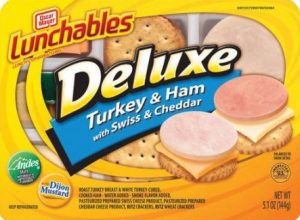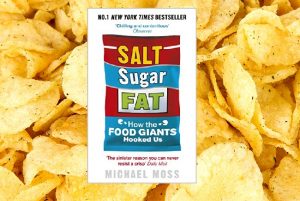Three ingredients – Salt, Sugar and Fat – contribute to the growing obesity epidemic across the world. A main source in our diet comes from processed foods, such as crisps, cookies, ready meals and other “convenience” food. The processed food manufacturers spent much of the 70’s and 80’s pumping vast quantities of each of these into the foods. This was for the sole purpose of making them as tasty and appealing as possible. To drive profits, some breakfast cereals were up to 70% sugar! Since the laws on nutritional labels weren’t what they are today, they got away with it.
Once the scientific studies started showing all three to be detrimental to public health when consumed in high doses, the real character of these companies came out. This book details the practices of processed food manufacturers, from the Chemistry PhD’s they hire to find the “bliss point” of each foodstuff, to the psychology behind marketing campaigns and the deception used to convince health-conscious consumers they can still enjoy these unhealthy foods.
Above all else, these food manufacturers are just companies. Companies with shareholders and payroll and quarterly growth targets, as well as stiff competition. The moral argument of harnessing all aspects of cutting edge research to overfeed the general public to an early grave has to be put to one side. In the book you learn that those who try will face pressure from the board of directors. Any drop in sales will only be picked up by a rival with a sweeter, fatter, saltier product. This book shines a light on how we’re all manipulated the second we enter the supermarket.
Book eleven is …
Salt Sugar Fat by Michael Moss
PRO TIP: Take notes! When you read a book, use a blank sheet of paper as a bookmark. Write down any interesting facts and information from the book. This condenses a whole book into 3-4 pages of key notes that are important and relevant to you.
My Notes
- The food scientists defined a “bliss point”, the perfect concentration of sugar to maximise profits. Research showed that children’s “Bliss Point” is a much higher concentration of sugar than an adult. It was around 35% sugar content, which they then implemented in products marketed at kids.
- Kellogg’s found the public had health concerns over the sugar content of their cereals. Instead of changing the recipe, they simply changed the product name. By re-branding from Sugar Frosted Flakes to Frosted Flakes, consumers (wrongly) assumed a reduced sugar content. They still contained over 50% sugar.
- In a TV advert they claimed Frosted Mini-Wheats increased focus in children by up to 18%. The research was biased, basing it off eating their product or being given no breakfast at all. Even then, most had no difference, and only one test subject saw a 17% improvement. (See The Advert Here)
- Coke’s President of North & South America was so shocked by a decision to give Coke to kids in Brazil that he wanted to change their policy. He spent four years failing to argue the case that nutrition should be a factor for the company, so quit.
- Kraft tried to market their sugar free products at diabetics, despite being otherwise unhealthy.
- Some companies made a decision to market directly to children instead of adults. The theory was that “nagging power” would influence purchasing habits. The decision was also made so that the child could become a lifelong consumer.
- In the late 1970’s the government agreed to subsidise the dairy industry, so would buy ALL milk AND derivatives (milkfat -> cheese). In 1982 they tried to cancel the deal, but by 1983 there was a new plan: to increase marketing for cheese.
- Popular “Lunchables” meals marketed to children around 1990 were incredibly unhealthy. One doctor said they contributed to some 10 year old children having “the hardened arteries normally seen in 45 year old men”.

- The problem with high Sodium content is that it draws fluid from bodily tissue into the blood. This increases blood volume, making the heart work harder.
- Unlike sugar, children are not born with a desire for salt. They grow to like it when bombarded with it in products. Studies found that children raised on baby foods and fresh produce had NO desire for salty foods in school.
- They use salt to mask the undesirable flavour of cheap processed ingredients. The taste of the products without the added salt was said to be deeply unpleasant
- If people reduced salt intake by 1/2 tsp a day in the US it would prevent 92,000 heart attacks, 59,000 strokes and 81,000 deaths. This would save the US $20 billion in healthcare and other costs (correct at time of publishing).
- Crisps don’t contain sugar, but the starch is formulated to break down as quickly as sugar, raising blood sugar levels.
Despite having a keen interest in “marketing tricks”, I was still shocked by some of the practices in this book. I know the use of imagery in adverts and shiny wrappers can get consumers, but the expert formulation of ingredients was beyond my expectation. When the food scientists maximise taste, they inadvertently minimise health benefits, and the only focus was on profits. Since all their competitors were doing it, taking a moral stance seemed entirely redundant. If you are someone who regularly eats processed foods or feeds them to your children, I would definitely recommend you read this book.


